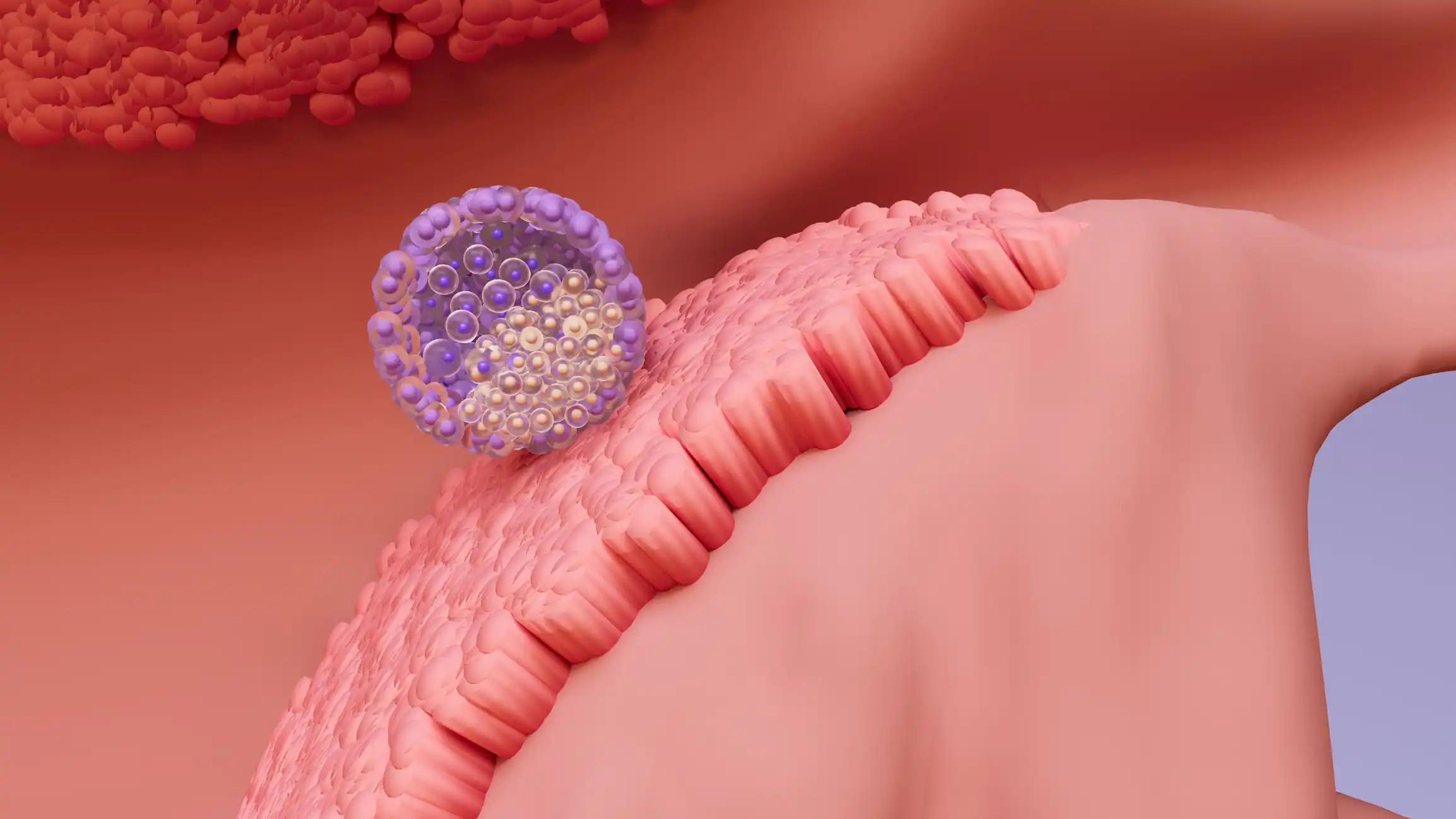KEY TAKEAWAYS
- Phase 3 DESTINY-Gastric01 assessed the effectiveness and safety of T-DXd in treating gastric or GEJ adenocarcinoma with low levels of human epidermal growth.
- T-DXd was administered intravenously at a dose of 6.4 mg/kg once every 3 weeks to individuals diagnosed with locally advanced or metastatic gastric/GEJ.
- An independent central review determined the confirmed objective response rate as the primary endpoint.
- Cohort 1 consisted of 21 patients, while Cohort 2 consisted of 24 patients.
- T-DXd showed promising results in treating extensively treated HER2-low gastric/gastroesophageal junction
The aim was to assess the effectiveness and safety of trastuzumab deruxtecan (T-DXd) in treating adenocarcinoma of the gastric or gastroesophageal junction (GEJ) with low levels of human epidermal growth factor receptor 2 (HER2). Individuals diagnosed with locally advanced or metastatic gastric/GEJ adenocarcinoma with HER2-low expression (cohort 1, immunohistochemistry 2+/in situ hybridization-negative; cohort 2, immunohistochemistry 1+) and who have undergone at least two prior regimens, including fluoropyrimidine and platinum, but have not received anti-HER2 therapy, were administered T-DXd intravenously at a dose of 6.4 mg/kg once every 3 weeks. The confirmed objective response rate (ORR), as determined by an independent central review, was the primary endpoint. Of the total 45 patients enrolled in the study, 40 received T-DXd and had measurable tumors at baseline. Cohort 1 consisted of 21 patients, while Cohort 2 consisted of 24 patients.
Among these, 19 patients in cohort 1 and 21 in cohort 2 underwent central HER2 confirmation. The confirmed objective response rate was 26.3% (95% CI, 9.1 to 51.2) in cohort 1 with five partial responses and 9.5% (95% CI, 1.2 to 30.4) in cohort 2 with two partial responses. In cohort 1, 68.4% of patients exhibited a decrease in tumor size, while in cohort 2, 60.0% of patients demonstrated a reduction in tumor size. Cohort 1 exhibited a median overall survival of 7.8 months (95% CI, 4.7 to nonevaluable), while cohort 2 exhibited a median overall survival of 8.5 months (95% CI, 4.3 to 10.9). The median progression-free survival was 4.4 months (95% CI, 2.7 to 7.1) and 2.8 months (95% CI, 1.5 to 4.3) for cohort 1 and cohort 2, respectively. The prevalent grade ≥ 3 treatment-emergent adverse events observed in cohorts 1 and 2 were anemia (30.0% and 29.2%), decreased neutrophil count (25.0% and 29.2%), and decreased appetite (20.0% and 20.8%). Interstitial lung disease/pneumonitis related to the drug was observed in a single patient from each cohort, with a severity grade of 1 or 2. There were no fatalities resulting from drug use. The study showed that T-DXd exhibits clinical efficacy in individuals with extensively treated HER2-low gastric/gastroesophageal junction adenocarcinoma.
Source: https://pubmed.ncbi.nlm.nih.gov/36379002/
Clinical Trail: https://clinicaltrials.gov/ct2/show/NCT03329690
Yamaguchi K, Bang YJ, Iwasa S, Sugimoto N, Ryu MH, Sakai D, Chung HC, Kawakami H, Yabusaki H, Lee J, Shimoyama T, Lee KW, Saito K, Kawaguchi Y, Kamio T, Kojima A, Sugihara M, Shitara K. Trastuzumab Deruxtecan in Anti-Human Epidermal Growth Factor Receptor 2 Treatment-Naive Patients With Human Epidermal Growth Factor Receptor 2-Low Gastric or Gastroesophageal Junction Adenocarcinoma: Exploratory Cohort Results in a Phase II Trial. J Clin Oncol. 2023 Feb 1;41(4):816-825. doi: 10.1200/JCO.22.00575. Epub 2022 Nov 15. PMID: 36379002; PMCID: PMC9901967.



